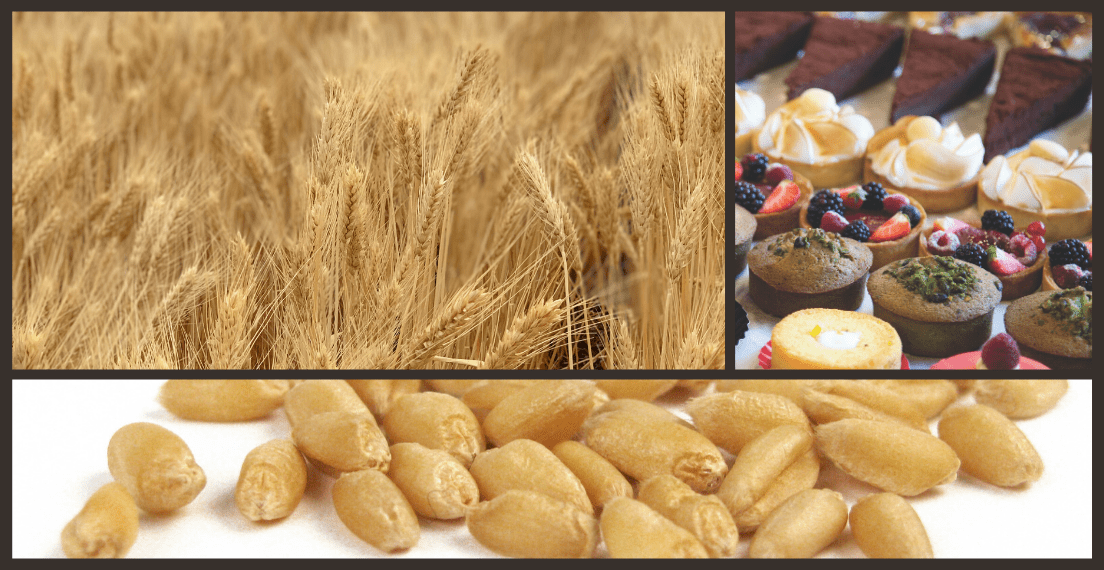Defining U.S. Wheat’s Comparative (Competitive) Advantage: Soft White
In the increasingly competitive global wheat market, it is important to review the advantages that U.S. wheat delivers to millers and bakers. This post examines the advantages that soft white wheat brings to the market.
Soft white (SW) wheat is the fourth largest class of wheat grown in the United States, with an annual average production over the last five years of 7.51 million metric tons (MMT), or about 276 million bushels. Although SW is the fourth largest class measured by production, it is the third-largest if measured by exports, with nearly 80% of its annual production exported. As with hard white (HW) wheat, SW wheat includes winter and spring varieties increasing the protein range and functionality within the class. U.S. SW wheat has a strong export demand in Asian markets. From specialty products such as sponge cakes, Asian noodles, biscuits, and crackers, to blending with hard red spring (HRS) and hard red winter (HRW) wheat for improving bread color, soft white wheat flour has the versatility to improve the quality and appearance of a wide variety of products.
Milling Advantages
U.S. soft white wheat performs very well on the mill. Arriving at the mill with a high 1,000 kernel weight, average moisture of less than 10%, an average test weight of more than 80 hectoliter mass, and a low quantity of screenings, SW wheat provides millers every opportunity for high flour extraction. The high extraction potential produces a whiter flour due to its lighter bran color. The lower wheat moisture allows the miller to temper the wheat to a lower average target moisture, optimizing flour extraction, particle size, and color.
Baking Advantages
The target market for SW is confectionary products, specifically sponge cakes. However, SW also performs well as a blending flour in a wider variety of products such as Asian noodles and steam bread. The lower moisture content of the flour produced creates an advantage for the baker by increasing the amount of water added while optimizing water absorption and product quality for the consumer. The finer particle size will generally increase the water absorption rate, decreasing mix time and improving production efficiencies. With the fine particle size and starch characteristics, SW flour creates a unique and tender texture for many end-use products. Some markets have successfully blended SW wheat flour with HRS wheat and HRW wheat flour to improve crumb color, texture, and even the loaf volume of pan bread.
As with hard white wheat flour, SW flour also delivers a low polyphenol oxidase (PPO) content. PPO is an enzyme that can cause dough discoloration. Lower PPO content brightens the appearance of any end product.
Sourcing Opportunities
Soft white wheat is defined by three distinct subclasses; soft white, white club, and western white. The three distinct subclasses allow the customer to purchase white club separately from soft white wheat, permitting the creation of different blends for specific uses. Club wheat is unique in that its ultra-soft weak gluten is not tied to protein content and delivering unique starch and protein characteristics that customers prefer for sponge cakes and other specialty confectionary products.
Standard SW may be purchased with a higher protein content (10.5%) to use in blends with HRS and HRW wheat classes to create products with different colors and textures. An important reminder when purchasing SW wheat: Customers generally specify a maximum protein content (max 9.0, 9.5, or 10.5% protein) for sponge cake and confectionary uses versus a minimum protein content typical in hard wheat contracts. Low protein SW, less than 9.0%, is generally priced more than higher protein greater than 10.5% depending on the year.
Alternatively, the subclass western white wheat is a blend of not less than 10% club and 90% soft white wheat, which allows the customer to define quality targets and adjust the proportion of SW and Club wheat in the blend according to price and quality expectations.
Yield Down, Protein Up in 2021 Crop
It is important to note that the Pacific Northwest (PNW) drought reduced SW production in 2021/22 by 26% and pushed protein levels higher than average. U.S. Wheat Associates (USW) is helping flour millers learn that testing for Solvent Retention Capacity (SRC) is an effective and valuable method for predicting the true performance characteristics of SW and SW subclass flour products, and additional testing is underway to assess performance in the 2021 crop.
U.S. Wheat Advantages
As we highlight each specific class in this series, let us not forget the advantages that all U.S. wheat classes bring to the market. First, and perhaps the most important, is consistency in quality and supply. Although each new crop year brings different challenges and opportunities, U.S. wheat is always available to the global market. Second, U.S. wheat delivers variety. Wheat is a raw material manufactured into a bakery ingredient, flour. The flour made from each unique class of U.S. wheat brings value to the market in the unique quality characteristics to make a variety of baked goods and noodles. It is also important to understand the value of blending flour from one or more types of wheat to optimize the flour performance at a minimal cost.
Each region, country, and culture have wheat-based food products that are uniquely their own. With six unique wheat classes, the United States has the right wheat class to deliver the optimal quality and value for every variety of product on the market.
Learn more about the six classes of U.S. wheat here or leave a question in our “Ask The Expert” section.
By Mark Fowler, USW Vice President of Global Technical Services
Read more about other U.S. wheat classes in this series.
Hard Red Winter
Hard Red Spring
Hard White
Soft Red Winter
Durum


